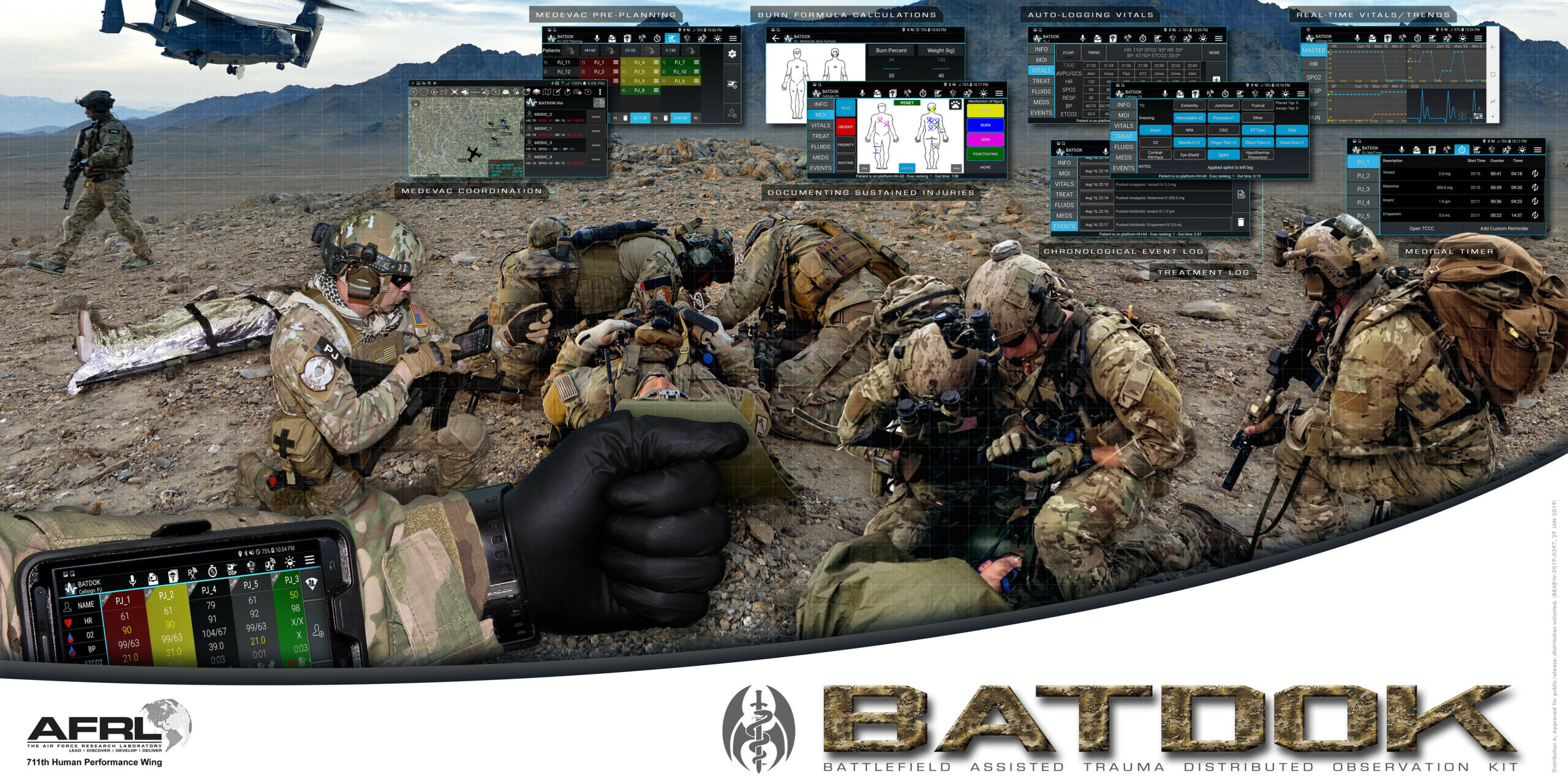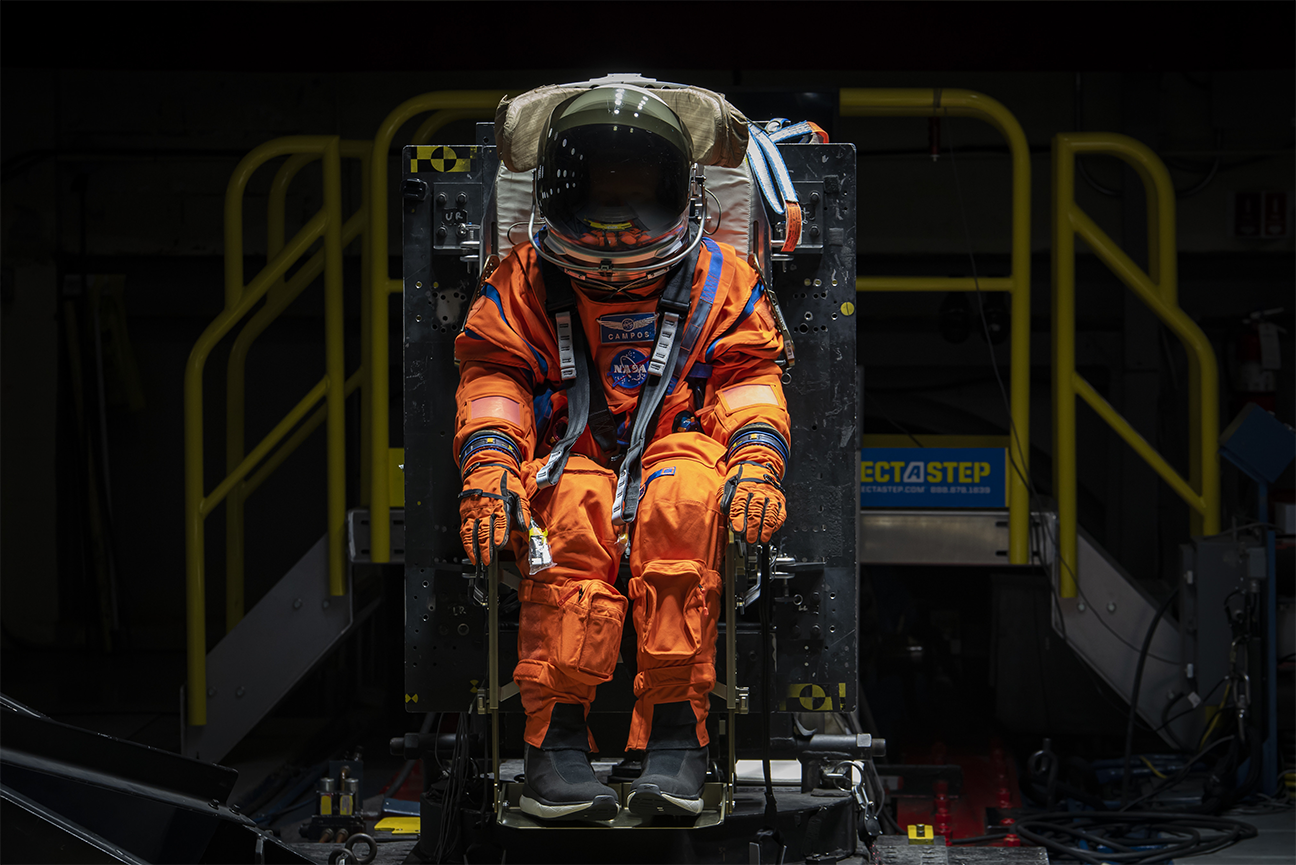WRIGHT-PATTERSON AIR FORCE BASE, Ohio (AFRL) – The Air Force Research Laboratory‘s, or AFRL’s, Airman Systems Directorate recently changed its organizational title to the Human Effectiveness Directorate to better reflect the scale of AFRL’s reach across the Department of Defense and its mission partners, as well as the scope of its mission. The directorate’s Airman Biosciences division was also redesignated as the Air and Space Biosciences division.
“These changes better communicate the research and development conducted by the people of the Human Effectiveness Directorate and Air and Space Biosciences division, while acknowledging those we support include Space Force Guardians and others from across the Department of Defense,” said J. Mark Coleman, director of the Human Effectiveness Directorate.
AFRL’s 711th Human Performance Wing, or 711 HPW, is a unique combination of the wing’s Human Effectiveness Directorate and the United States Air Force School of Aerospace Medicine, a center for aerospace medical learning, consultation, aerospace medical investigations and aircrew health assessments. The wing is an integrated organization that provides for available, ready and high-performing Airmen and Guardians. While it falls under AFRL, the 711 HPW has a functional alignment to the Air Force Surgeon General, the Air Force Medical Service, and the Defense Health Agency.
“Through world-class programs, the 711 HPW is always working to discover and develop new ways to help Airmen and Guardians through research, consultation and education,” Coleman said.
A recent example of such support is the U.S. Space Force Continuous Fitness Assessment study. A Human Effectiveness Directorate team is testing a 21st-century alternative solution to annual physical fitness tests that incorporates wearable technology, with two-thirds of Space Force Guardians already enrolled as voluntary participants in the study. When the study concludes, the team will analyze results to determine the effectiveness of wearables relative to the current physical fitness tests and advise on future efforts to make wearables a permanent option. Study results have the potential to shape future policy regarding how the U.S. Space Force tracks members’ physical fitness.

A Guardian syncs data from a wearable device to a phone during a Continuous Fitness Assessment, or CFA, study informational session hosted by an Air Force Research Laboratory team at a facility near Wright-Patterson Air Force Base, Ohio, June 8, 2023. The CFA study is a two-year voluntary effort with Guardians to assess the use of wearable fitness devices that measure physical activity. The CFA is part of the U.S. Space Force’s Holistic Health Approach, an initiative that promotes wellness through positive behaviors and seeks to replace traditional military fitness tests with data from continuous monitoring technology. (U.S. Space Force photo / Rick Eldridge).
With a fierce focus on the warfighter, the directorate also developed the Battlefield Assisted Trauma Distributed Observation Kit, or BATDOK, a smartphone application that replaces pen and paper medical charts on the battlefield. The app has been selected as the joint integrated electronic health record for point-of-injury and en route care by the Joint Operational Medicine Information Systems, or JOMIS, with the goal of supporting medical providers and helping to bring warfighters home.

The Battlefield Assisted Trauma Distributed Observation Kit, or BATDOK, is software that runs on a smartphone or mobile device that can collect real-time patient information from a variety of sensors at the point of injury. The software makes it easier for the deployed medic to document vitals, help administer critical care, integrate patient data, and identify exact location of casualties in austere combat environments. (U.S. Air Force graphic)
AFRL’s diverse, talented employee pool and world-class facilities also make the lab an ideal partner to solve complex problems with enduring solutions.
For instance, a team from the directorate worked with NASA and industry partners to test a current iteration of an astronaut crew seat and flight suit that will be used in the Orion spacecraft during future missions to space. Ultimately, testing assessed the structural integrity of the suit and seat to ensure safety. Researchers used the Horizontal Impact Accelerator to test multiple landing scenarios and gauge how the events inherent to the Orion spacecraft’s landings might affect Artemis II mission crew. The Human Effectiveness Directorate regularly facilitates joint operational support efforts such as these within the 711th Human Performance Wing, the only organization within the Department of the Air Force solely focused on a mission to enable, sustain, enhance and restore Airmen and Guardians.

Campos, a fire and rescue training manikin, at the sled test facility at Wright-Patterson Air Force Base, Ohio, April 17, 2023, where Air Force Research Laboratory, or AFRL, and NASA staff test the seat and flight suit for safety measures. AFRL and NASA, along with other industry partners, such as Lockheed Martin, tested the most current iteration of an astronaut crew seat and flight suit that will be used on the Orion spacecraft during the next mission to the moon under the Artemis Program. The manikin used in the testing was Campos, named after the legendary Arturo Campos, an electrical engineer who was instrumental to saving the Apollo 13 crew. Campos is accurately weighed and has the appropriate density of a human for testing. (U.S. Air Force photo / Rick Eldridge)
“The organization’s name change reflects its support of the U.S. Air Force and the U.S. Space Force, with emphasis on optimizing warfighters’ performance and on supporting their physical and mental health and well-being,” said Brig. Gen. (Dr.) Robert K. Bogart, commander of the 711 HPW. “The synergies of combining the ideas, resources and technologies of these units position the 711 HPW as a world leader in the study and advancement of human performance.”
About AFRL
The Air Force Research Laboratory is the primary scientific research and development center for the Department of the Air Force. AFRL plays an integral role in leading the discovery, development, and integration of affordable warfighting technologies for our air, space and cyberspace force. With a workforce of more than 12,500 across nine technology areas and 40 other operations across the globe, AFRL provides a diverse portfolio of science and technology ranging from fundamental to advanced research and technology development. For more information, visit www.afresearchlab.com.

